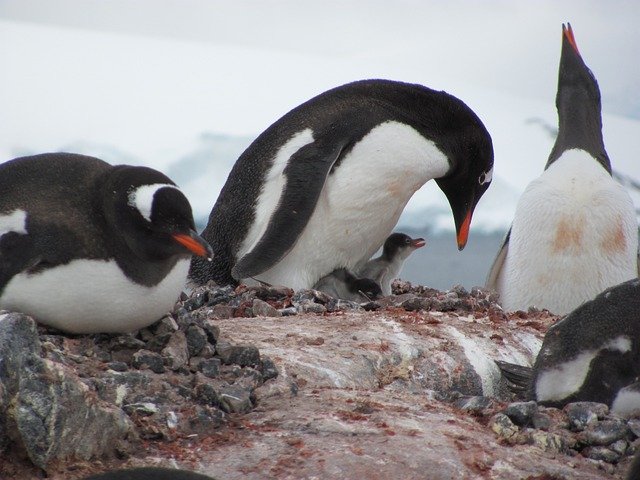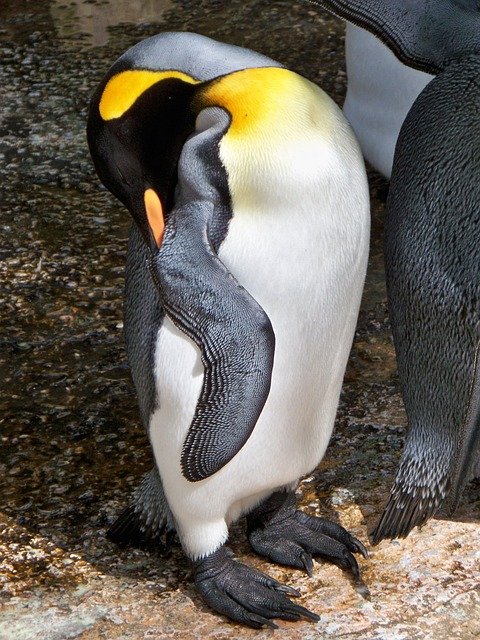**Title: "The Remarkable Adaptations of Penguins: Masters of Survival in the Harshest

The Remarkable Adaptations of Penguins: Masters of Survival in the Harshest Environments
Penguins are fascinating creatures that have captivated the hearts and minds of many. These flightless birds, primarily found in the Southern Hemisphere, have evolved a range of remarkable adaptations that enable them to thrive in some of the harshest environments on Earth. From the icy landscapes of Antarctica to the temperate shores of South America, penguins are truly masters of survival.
1. Streamlined Bodies for Efficient Swimming
One of the most notable adaptations of penguins is their streamlined bodies, which are perfectly designed for life in the water. Their torpedo-shaped form minimizes drag, allowing them to swim swiftly and efficiently. This adaptation is crucial for hunting prey, such as fish and krill, as they can dive to impressive depths and cover long distances in search of food.
2. Insulating Feathers for Extreme Cold
Penguins are equipped with a layer of densely packed feathers that provides excellent insulation against the frigid temperatures of their habitats. Beneath their feathers, a thick layer of blubber further enhances their ability to retain body heat. This combination of insulation allows them to endure temperatures as low as -60°C (-76°F) while remaining comfortable.
3. Unique Social Behaviors
Social behavior is another key adaptation that helps penguins survive in harsh environments. Many species, such as the Emperor Penguin, engage in cooperative breeding and communal nesting. By huddling together in large groups, they can conserve warmth and protect themselves from the biting cold. This social structure also aids in the care of their young, ensuring higher survival rates for the chicks.
4. Diving Abilities and Breath Control
Penguins are exceptional divers, with some species capable of reaching depths of over 500 meters (1,640 feet) and holding their breath for up to 20 minutes. Their respiratory systems are adapted to maximize oxygen efficiency, allowing them to dive for extended periods while hunting. This ability is vital for finding food in the nutrient-rich waters surrounding their icy homes.
5. Camouflage and Counter-Shading
To evade predators while swimming, penguins have developed a form of camouflage known as counter-shading. Their dark backs blend in with the ocean depths when viewed from above, while their lighter bellies match the bright surface of the water when seen from below. This adaptation helps them avoid detection from both predators and prey.
6. Feeding Strategies
Penguins have also adapted their feeding strategies to maximize their chances of survival. They primarily feed on small fish and krill, using their sharp beaks to catch and hold onto slippery prey. Some species, like the Gentoo Penguin, have been observed using tools, such as stones, to help them access food sources.
Conclusion
Penguins are a testament to nature's ingenuity, showcasing a variety of adaptations that allow them to thrive in some of the planet's most challenging environments. As climate change and human activities increasingly threaten their habitats, understanding these remarkable creatures and their adaptations is crucial for their conservation. By appreciating the resilience and resourcefulness of penguins, we can better advocate for their protection and the preservation of their unique ecosystems.
References
- National Geographic: Penguins
- World Wildlife Fund: Penguins
- Penguin Conservation: A Global Perspective

Upvoted! Thank you for supporting witness @jswit.